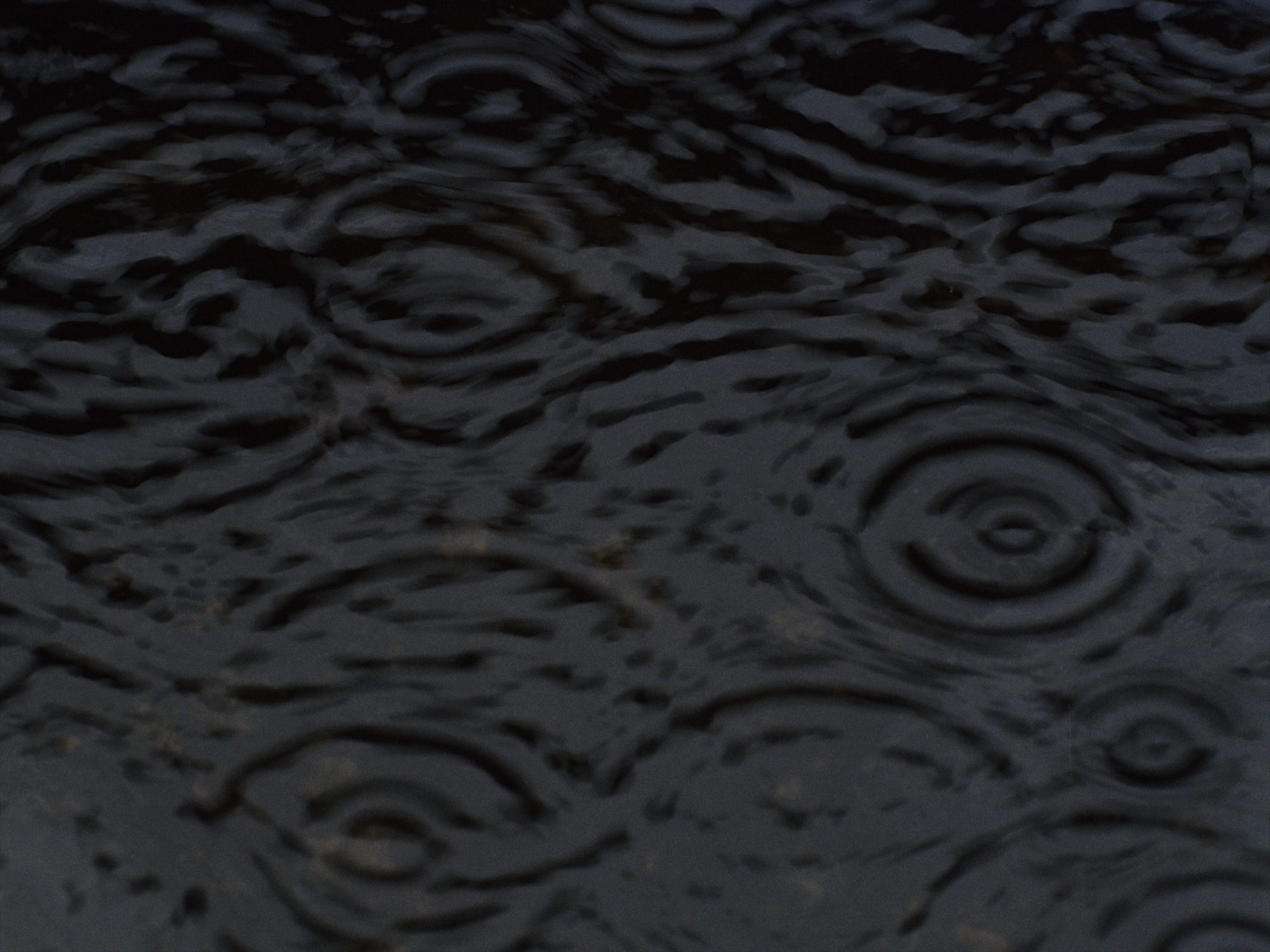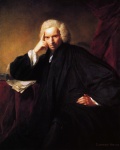Adapted from a public lecture on 18 October 2018 at Jesus College, University of Cambridge.
Summary:
Patrick Keiller’s approach to making films was encouraged by two texts: one in Laurence Sterne’s Tristram Shandy, the other in an essay by John Berger, quoted by the geographer Edward Soja as exemplary of the ‘spatial turn’. Berger’s text is a critique of linearity in narrative, while for Sterne, as Sukhdev Sandhu has written, ‘linearity … amounted to little more than selfishness’. In this talk, Keiller described the development of The Robinson Institute, an exhibition at Tate Britain in 2012, one of several works by him in which moving pictures were arranged simultaneously in space, rather than in time, one after another, as they are in films.
*
When I began making moving images of buildings and other structures in the late 1970s, I wasn’t sure what to do with the footage. Film and video had been exhibited in mainstream galleries during the 1970s, but by the early ’80s, in the UK, that kind of art was in eclipse. The individual images seemed to require explanation. Being used to giving lectures in which what was said accompanied pictures of buildings, I had no better idea than to assemble the individual takes one after another, with accompanying narration, as films.
The films were, mostly, originated on journeys; in any case, as Michel de Certeau explained: ‘Every story is a travel story – a spatial practice.’ [1]
It was difficult to write coherently for a montage of relatively short images. I found a helpful passage in Laurence Sterne’s Tristram Shandy:
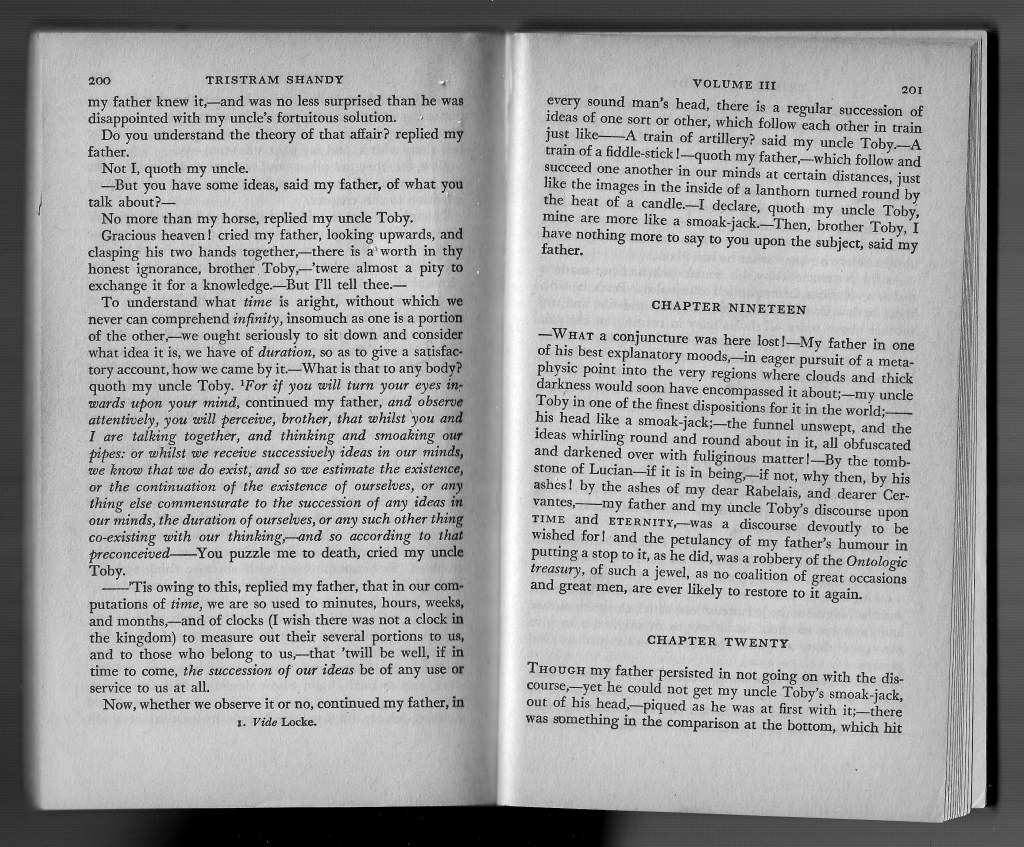
‘For if you will turn your eyes inwards upon your mind … and observe attentively, you will perceive, brother, that whilst you and I are talking together, and thinking and smoaking our pipes: or whilst we receive successively ideas in our minds, we know that we do exist . . . Now, whether we observe it or no, continued my father, in every sound man’s head, there is a regular succession of ideas of one sort or other, which follow each other in train just like—A train of artillery? said my uncle Toby.—A train of a fiddle-stick!—quoth my father,—which follow and succeed one another in our minds at certain distances, just like the images in the inside of a lanthorn turned round by the heat of a candle—’ [2]
In an essay about Sterne and Ignatius Sancho, Sukhdev Sandhu wrote: ‘Linearity, Sterne believed, amounted to little more than selfishness. In contrast, he felt that we must look around us, be prepared to halt, be diverted by what is going on in the corners, the crevices, the byways of life. These side routes are full of value, pleasure, goodness . . .’ [3]

Sterne: ‘In a word, my work is digressive, and it is progressive too.’ [4]
About ten years later, I was alerted to Edward Soja’s Postmodern Geographies, in which Soja quoted two paragraphs from John Berger’s essay ‘No More Portraits’ that have since become a founding text of contemporary geography:
‘We hear a lot about the crisis of the modern novel. What this involves, fundamentally, is a change in the mode of narration. It is scarcely any longer possible to tell a straight story sequentially unfolding in time. And this is because we are too aware of what is continually traversing the story-line laterally. That is to say, instead of being aware of a point as an infinitely small part of a straight line, we are aware of it as an infinitely small part of an infinite number of lines, as the centre of a star of lines. Such awareness is the result of our constantly having to take into account the simultaneity and extension of events and possibilities.
‘There are many reasons why this should be so: the range of modern means of communication: the scale of modern power: the degree of personal political responsibility that must be accepted for events all over the world: the fact that the world has become indivisible: the unevenness of economic development within that world: the scale of the exploitation. All these play a part. Prophesy now involves a geographical rather than historical projection; it is space, not time, that hides consequences from us. To prophesy today it is only necessary to know men as they are throughout the whole world in all their inequality. Any contemporary narrative which ignores the urgency of this dimension is incomplete and acquires the over-simplified character of a fable.’

Soja: ‘To make his point, [Berger] turns to an analogous change in the modern novel, a shift in the context of meaning and interpretation which hinges around the impress of simultaneity versus sequence, spatiality versus historicity, geography versus biography.’ [5]
Doreen Massey: ‘Perhaps we could imagine space as a simultaneity of stories-so-far.’ [6]
If the novel has survived its crisis, this is partly because one can read, as well as write, a book in a variety of ways. Linearity is a greater problem for the cinema: it is difficult to explore a film in the way one can a book. For me, Berger’s paragraphs suggested, firstly, a model for films in which the narration explored the intersections occurring at each of the places depicted in the images and, secondly, other works in which moving images were assembled in space, rather than in time.
The first of these was an exploration of urban space in examples of early film preserved in the British Film Institute’s National Archive. In the 1890s, most films were around a minute long, and often comprised one continuous take; many were street scenes and other urban actualities. Only after the mid-1900s did films begin to change. An interactive display of 68 films from the period 1896-1909 arranged as a virtual landscape on a network of interconnected maps was exhibited several times, most extensively as an exhibition at the BFI’s Southbank Gallery in 2007-8. Highlighted place names on a map of the UK in 1894 led either to films, or more often to more detailed maps from which the films accessed. In the exhibition, visitors could explore the UK’s landscape of c1900 by intervening in any of five ‘regional’ default sequences using the control functions of a DVD.

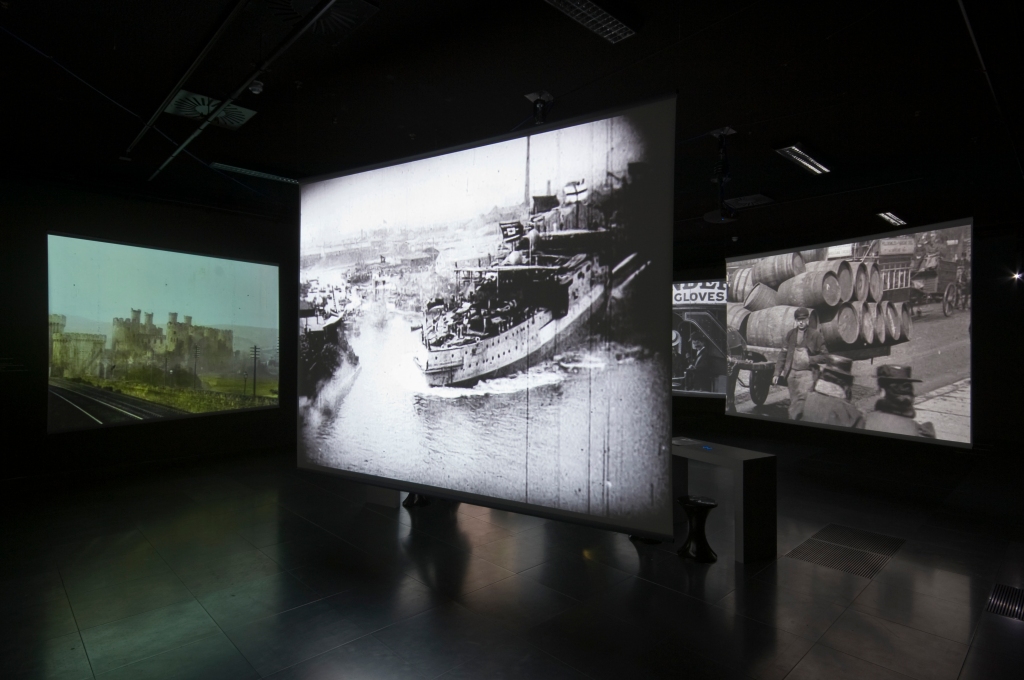
Another spatial assembly was conceived in 2006 in response to an invitation from Le Fresnoy: Studio national des arts contemporains, Tourcoing, to devise an exhibit that would be Le Fresnoy’s contribution to a festival, Lille 3000, the subject of which was to be the city of Mumbai. The result was a 30-screen moving-image reconstruction of Mumbai’s Chhatrapati Shivaji Terminus, one of the largest neo-gothic railway stations in the world, in Le Fresnoy’s 1,000m2 Grand Nef, a former dance hall that resembles the train shed of a railway station. The screens were arranged to mimic the locations of camera viewpoints in and around the station.



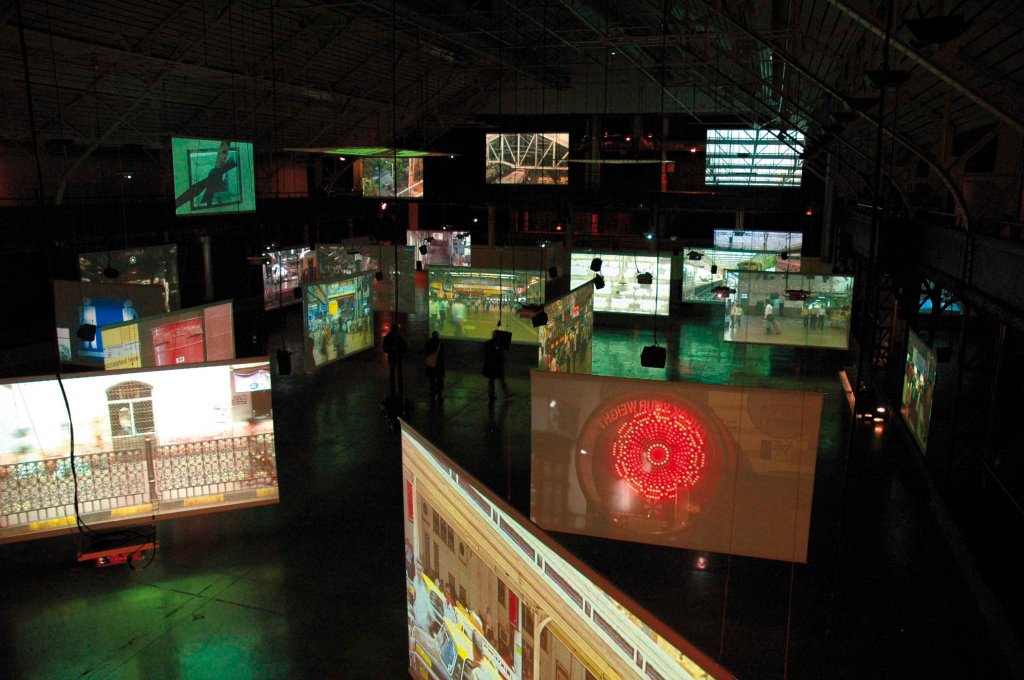

When I came to make another film, I was keen to find possibilities to exhibit the footage in other ways, either as a book – like the earlier Robinson in Space – or, perhaps, an exhibition that would include additional material encountered making the film.
The film – Robinson in Ruins – was realised as part of a project with Doreen Massey, Patrick Wright and Matthew Flintham. I had written that it was ‘prompted by an apparent discrepancy between, on one hand, the cultural and critical attention devoted to experience of mobility and displacement and, on the other, a tacit but seemingly widespread tendency to fall back on formulations of dwelling that derive from a more settled, agricultural past’.
It was the result of an anti-clockwise wandering through part of southern England during ten months of 2008.

Its first destination was the Pelican Inn at Speenhamland, in Newbury (2 on map), where a meeting of the Berkshire magistrates on 6 May 1795 inaugurated what became known as the Speenhamland system of outdoor poor relief, a means-tested payment linked to the price of bread.

In the same year, England’s poor laws were amended by An Act to prevent the Removal of Poor Persons, until they shall actually become chargeable (35 Geo III c.101), a measure to enable landless labourers to migrate to cities, ‘where burgeoning capitalist enterprise needed them most’.

For the economic historian Karl Polanyi, these parallel developments exemplified his concept of the ‘double movement’: Speenhamland offered landless agricultural workers some protection from the displacement intended by the Act and the subsequent imposition of a labour market. ‘The idea of a self-adjusting market,’ he wrote, ‘implied a stark utopia. Such an institution could not exist for any length of time without annihilating the human and natural substance of society.’
In the autumn, at the climax of the banking crisis, the film’s last destination was the intended point of assembly of the Oxfordshire Rising of 1596, a place named then as Enslow Hill (7 on map).

The rising’s protagonists aimed to ‘knock down’ enclosing landlords, capture arms and march to London to join with the city’s apprentices, who had rioted during the previous year. But on the appointed night only four men assembled. Many more were arrested, and several imprisoned in London to be interrogated under torture. Two that survived this were convicted of ‘compassing to levy war against the Queen’ and hanged, drawn and quartered on the hill.
The name Enslow Hill has until recently never appeared on any map, and much of what it is generally understood to be was removed by quarrying in the nineteenth and twentieth centuries. Vodafone’s satellite communications station is located in the former quarry. The rising’s protagonists believed the hill was the site of an action during an earlier rising in 1549, and it was perhaps a pre-Conquest meeting place – a Spelleburge or ‘Speech Hill’. During the era of canal building, it acquired the name ‘Gibraltar Point’; it overlooks the river Cherwell, the Oxford Canal and the Southampton to Birmingham railway line, and signals the edge of a zone of transition between the geologies of southeast and northwest Britain.
A few months after the film was finished, I was invited to adapt it as the 2012 edition of the Tate Britain Commission, a six-month display in the Duveen Galleries that was to include works from the Tate’s collection..
I returned to Berger’s essay: ‘That is to say, instead of being aware of a point as an infinitely small part of a straight line, we are aware of it as an infinitely small part of an infinite number of lines, as the centre of a star of lines.’

The exhibition was conceived as a series of Berger’s ‘stars’, a place of intersecting narratives that would be especially demonstrative of the ‘simultaneity of stories-so-far’. In discussions with Tate curators Katharine Stout and Sofia Karamani and architect Jamie Fobert and his colleagues, the ‘stars’ became ‘constellations’, then ‘clusters’. These would be spaces, not objects.
Seven ‘clusters’ were arranged in an anti-clockwise order in an approximate match with the numbers on the map. They were introduced by text panels with titles: Robinsonism; 1795; Greenham Common, Aldermaston, and the Government Pipeline and Storage System; The non‑human, the post‑human; Agriculture; 1830; and Hanged, drawn and quartered.



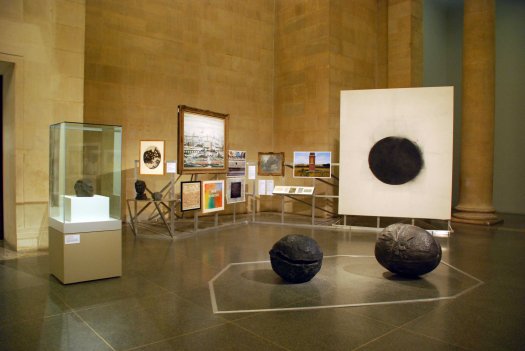
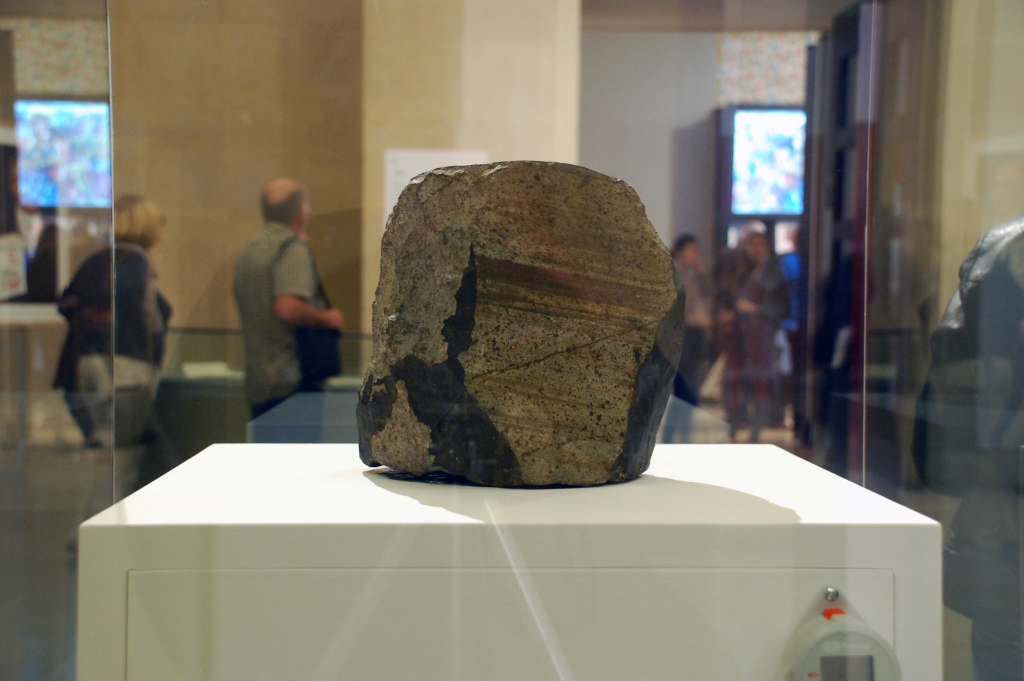

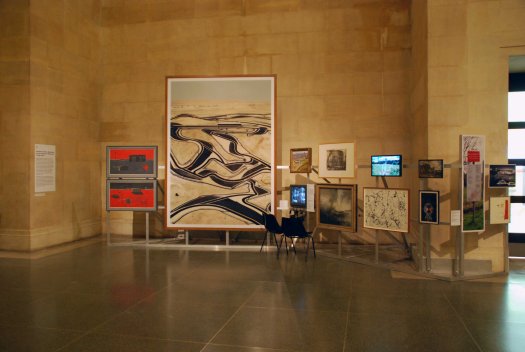

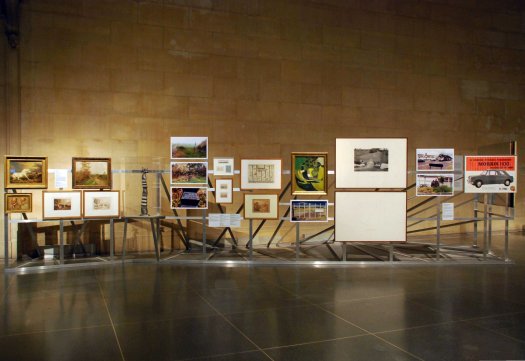

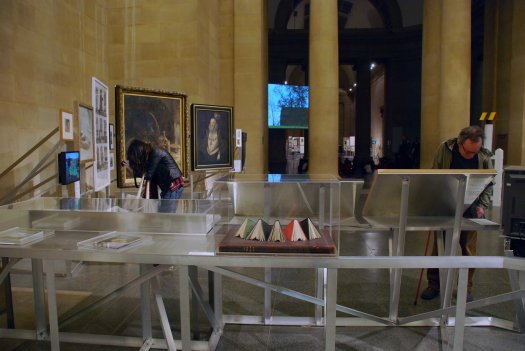
The Robinson Institute was displayed from 27 March until 14 October 2012.
For more on the design and construction of the exhibition, see Jamie Fobert Architects‘ web pages.
See also: Patrick Keiller, The Possibility of Life’s Survival on the Planet (London: Tate Publishing, 2012).
Notes:
[1] Michel de Certeau, The Practice of Everyday Life (Berkeley: University of California Press, 1984), 115.
[2] Almost, though not quite, a description of a zoetrope, a precursor of cinema.
[3] Sukhdev Sandhu, ‘Ignatius Sancho and Laurence Sterne’, Research in African Literatures, Vol. 29, No. 4, (1998), 88-105.
[4] Tristram Shandy, Vol. 1, Ch. 22.
[5] Edward W Soja, Postmodern Geographies: the Reassertion of Space in Critical Social Theory (London, New York: Verso, 1989), 22. Berger’s essay was published first in New Society in 1967, most recently in Landscapes: John Berger on Art, ed. Tom Overton (London, New York: Verso 2016), 165-170, and as ‘The Changing View of Man in the Portrait’ in anthologies The Moment of Cubism (1969), The Look of Things (1972) and Selected Essays (2001). Punctuation, spelling etc. here are as in The Look of Things.
[6] Doreen Massey, For Space (London: Sage, 2005), p.9.
